Some of the links in this post may be affiliate links.
Pepperomia obtusifolia is one of my favorite (and easiest!) houseplants to grow indoors. Some common names include Baby Rubber Plant, Radiator Plant, Pepper Face Plant and American Rubber Plant. In this post, I will share with you some crucial care tips including light, watering, fertilizing, soil and pot size, temperature and humidity, flowering, propagation and more!
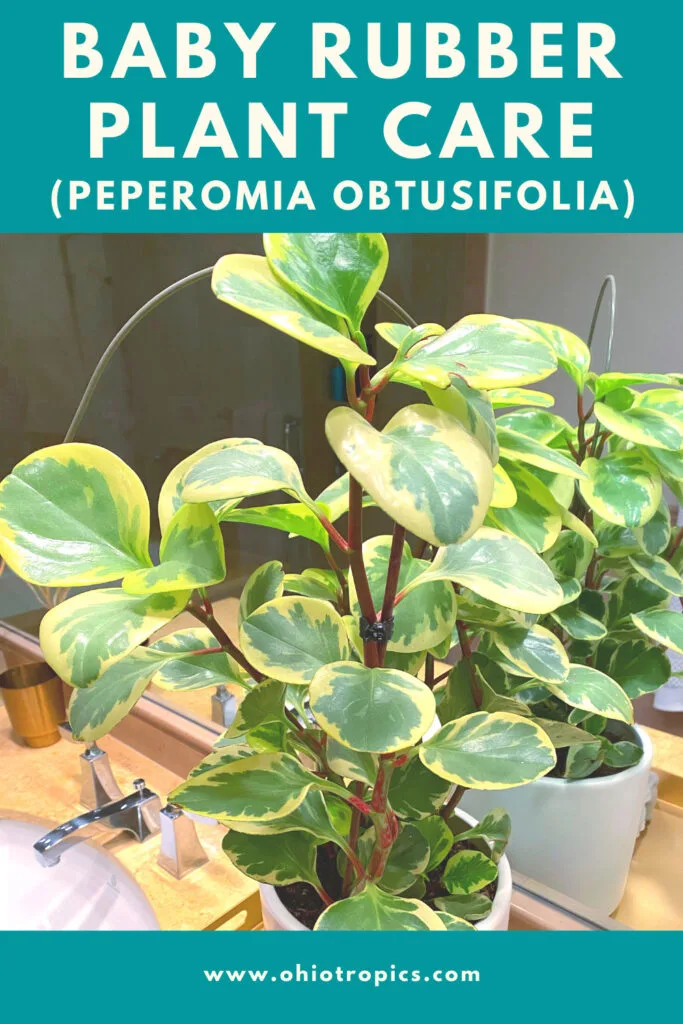
Before I get into the care tips for this plant, it is important to note that although it is called Baby Rubber Plant, it is NOT to be confused with Ficus elastica, which is commonly known as the Rubber Plant.
The natural habitat for Peperomia obtusifolia ranges from Florida, to much of tropical america (Cental America and South America). Its fleshy, thick stems and succulent leaves make it ideal for the forgetful indoor gardener since they will happily tolerate some neglect.
Some of the most common cultivars include Peperomia Jade (which has dark green leaves) and Peperomia obtusifolia Variegata which has gorgeous, variegated leaves.
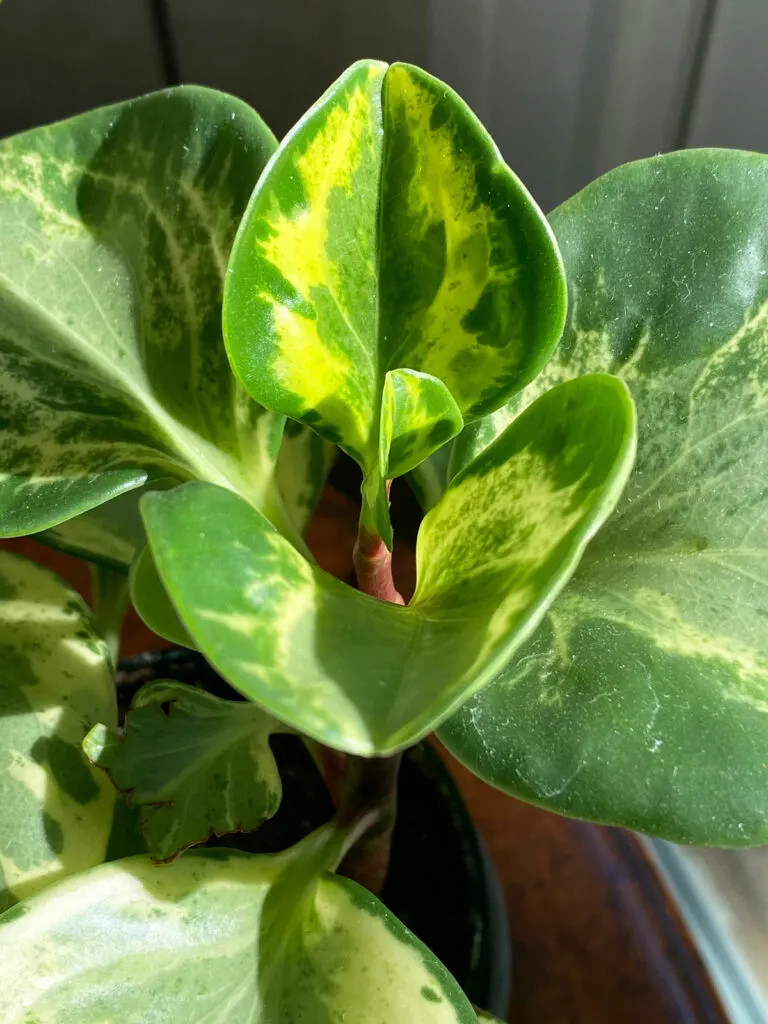
Table of Contents
PEPEROMIA CARE TIPS
1. LIGHT
Although Peperomia species are often touted as low light plants, be careful of this term. Unless you just want your Peperomia obtusifolia to just sit there and have a poor growth rate, your plant needs enough light.
My own plant, which happens to be a variegated cultivar, grows in front of a large, Eastern facing window. In this spot, it gets direct morning sunshine and has enough bright light available for healthy growth.
Although you don’t want these plants to sit in direct sun all day, try and situate your plant somewhere where it can receive 2-3 hours of direct sun either in early morning or late afternoon. This will ensure a good growth rate.
If you have a variegated cultivar like I do, this is especially important so that the plant can retain its beautiful yellow variegation.
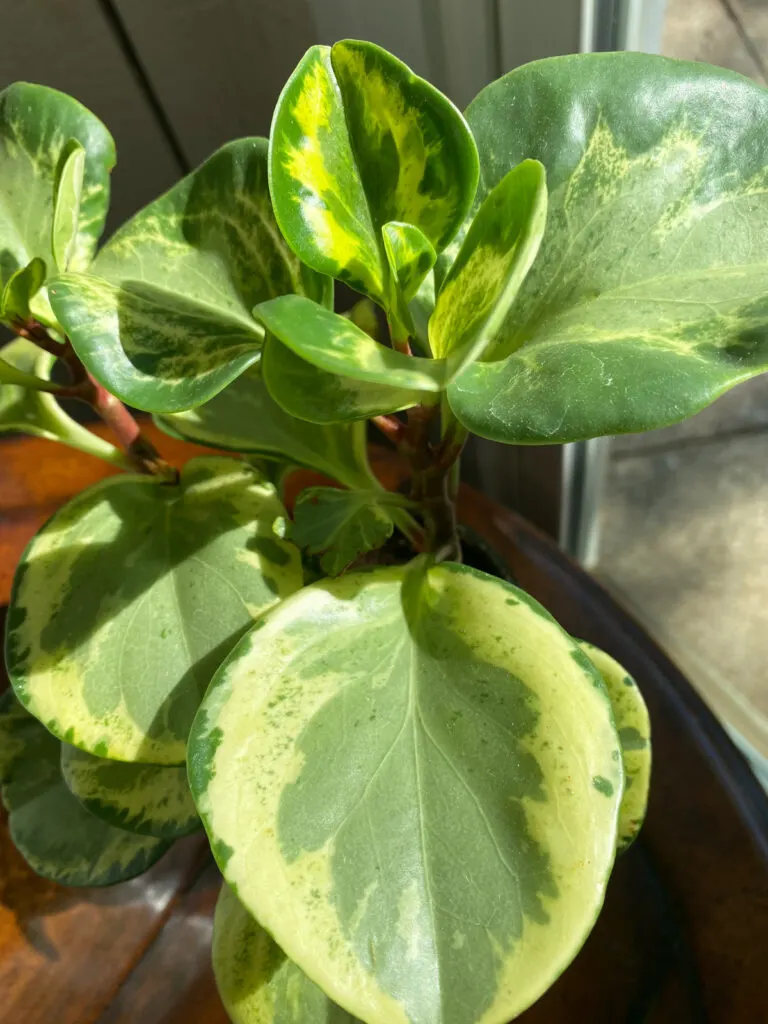
As far as windowless locations go, unless you have overhead fluorescent light on for several hours all day, you’ll want to avoid these locations. For best growth, you’ll also want to try and avoid locations that are far from a window, or even offset from a window.
A friend of mine has the plain green version of this plant right up against a wall and off to the side of a window. The plant is barely growing at all, and any new leaves are substantially smaller.
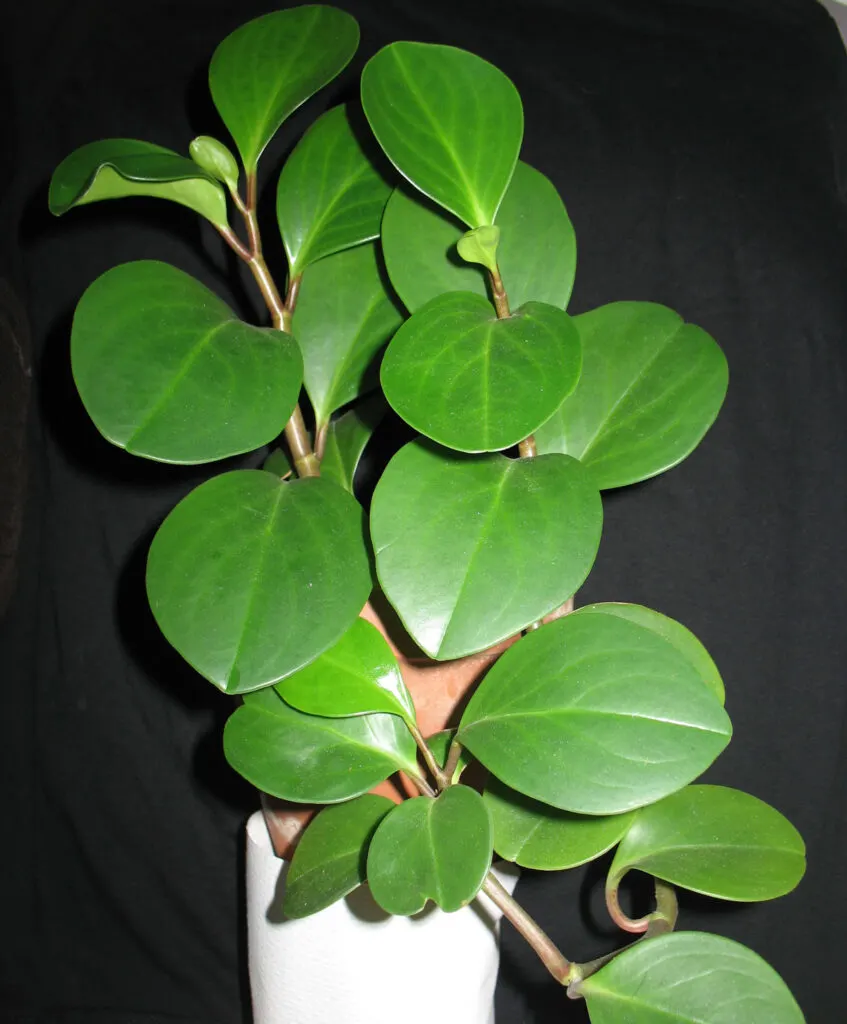
2. WATERING
It is always important to thoroughly water your plant and all all excess water to escape the drainage hole. I allow at least the top 1/4 of the potting mix to dry out before watering again.
Because Baby Rubber Plants have thick, succulent-like leaves, they can easily withstand some drought. You can safely allow your potting mix to completely dry out, but please water your plant well if it reaches that point.
Is it best to keep these plants more on the dry side (but when you do water, always water thoroughly!)
And please avoid using moisture meters! They are notoriously inaccurate. I feel so strongly about not using moisture meters that I wrote a post about the dangers of using a moisture meter.
3. FERTILIZING
My favorite fertilizer that I use with most of my houseplant collection, including my Peperomia plants, is Dyna-Gro Grow.
You can purchase it easily from Amazon (see below). It is a urea-free fertilizer, so it will not burn your plants, and contains all of the micro and macro nutrients that plants need to thrive.
When used consistently, alongside good growing conditions, you will notice some wonderful changes in your plants.
4. SOIL, POT SIZE & REPOTTING
It is crucially important to use the appropriate pot size as well as potting mix in order to have a thriving plant. Since they have fairly shallow, small root systems, never over-pot these plants otherwise the potting mixes will take too long to dry out and cause issues for your plant.
Continually soggy soil will eventually invite root rot and spell death for this plant over time.
My rule of thumb is to only go up one pot size when repotting. For example, if your plant is a 4 inch diameter pot, only go up to a 6 inch diameter pot and no bigger.
A great time to repot would be late spring or early summer when your plant is in active growth.
These plants can stay in the same pot for quite a long time. As long as your plant is still growing well and appears healthy, there is no need to repot. Eventually as the plant becomes more and more root bound, you’ll want to consider a bigger pot.
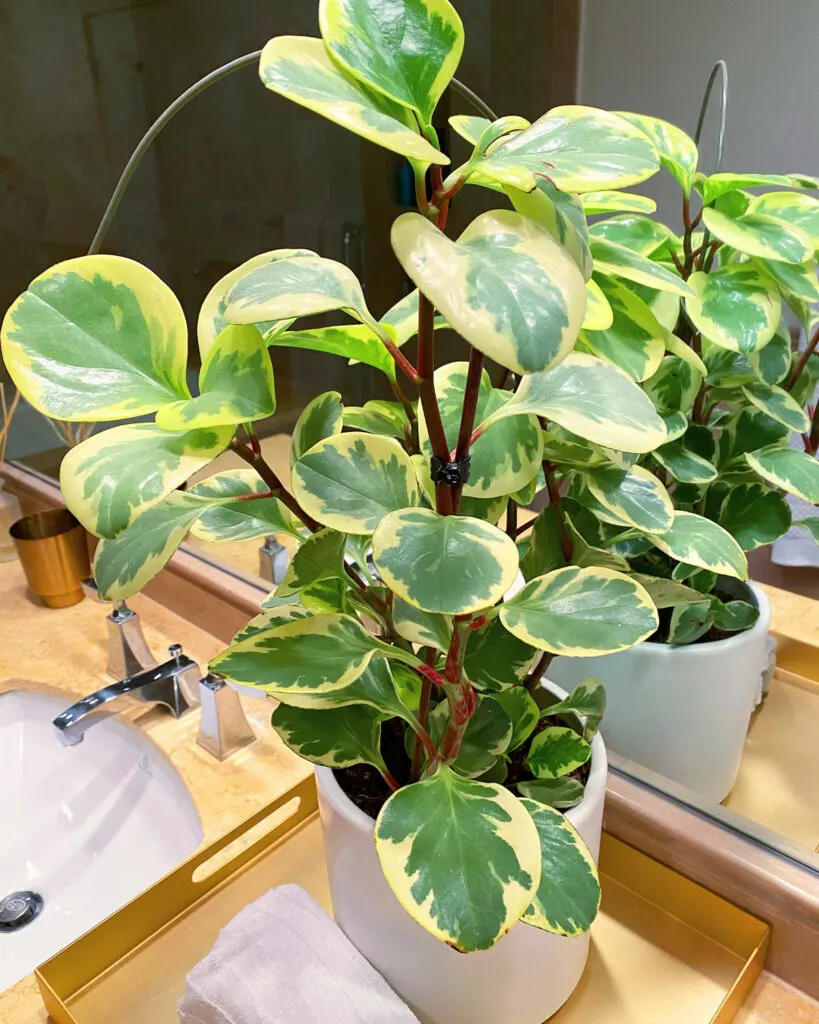
Your goal for potting mixes is to provide good drainage and to allow the potting mix to dry out in a reasonable amount of time.
A potting mix blend that I love using for any plant in the Peperomia genus is 2 parts of an all-purpose potting mix (Miracle Gro or Espoma make great mixes) blended with 1 part of 1/4″ pumice.
My favorite pumice that I use is from Bonsai Jack (you can purchase below from Amazon). Amending your mix with this pumice provides the amazing drainage that these plants enjoy and need.
If you’re looking for an amazing potting mix that you can use straight out of the bag for your Peperomia obtusifolia, check out the Tropical Succulent soil blend from Oh Happy Plants. This is an amazing mix and you will get 10% off at checkout automatically if you use my link.
To see how to repot step by step, check out my Peperomia obtusifolia repotting blog post where I show everything with photos so you can follow along easily.
5. TEMPERATURE & HUMIDITY
These plants love warm temperatures, so avoid any areas with cold drafts or cool air. I always say that if you are comfortable in a room, most of your plants will be too.
Try and keep any minimum temperatures above 55F (13C). If you move your plant outdoors, make sure that night time temperatures are consistently above this.
Now onto humidity.
Although these plants do appreciate higher humidity levels, they do just fine with average home humidity. If your humidity levels are very low (especially in the winter time if you’re running forced air heat), it is beneficial to set your plant on top of a pebble tray filled with water, or to simply use a humidifier.
Check out my blog post on how to increase humidity for more details.
Whatever you do, don’t obsessively mist these plants. Misting is not only ineffective at increasing humidity (it only wets your foliage), but if you over do it, you could also be encouraging fungal diseases.
Brown spots on the leaves can be an indication of a fungal issue.
6. FLOWERING
These plants are grown for their foliage, and although they do flower, they are typical, insignificant white flowers that are very characteristic of Peperomia plants.
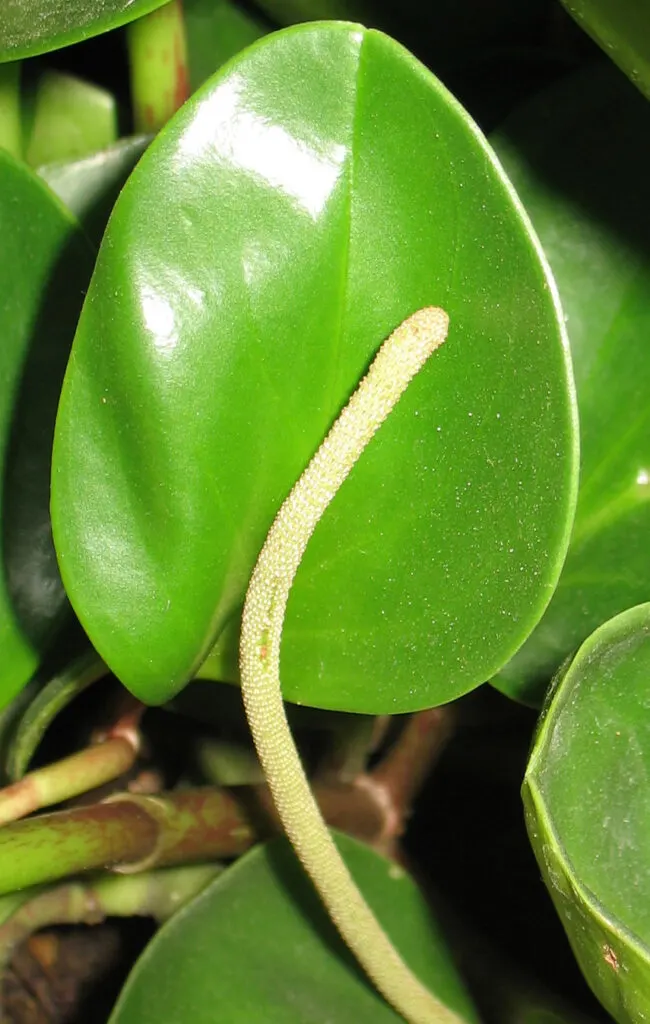
The inflorescence is typically long and white, and the flowers themselves are actually very tiny and greenish white in color.
When I see my plants start to produce these flowering spikes, I normally cut them off. I don’t enjoy them, and I can spare some of my plant’s energy by trimming them off.
Here is an inflorescence on my variegated Peperomia obtusifolia.
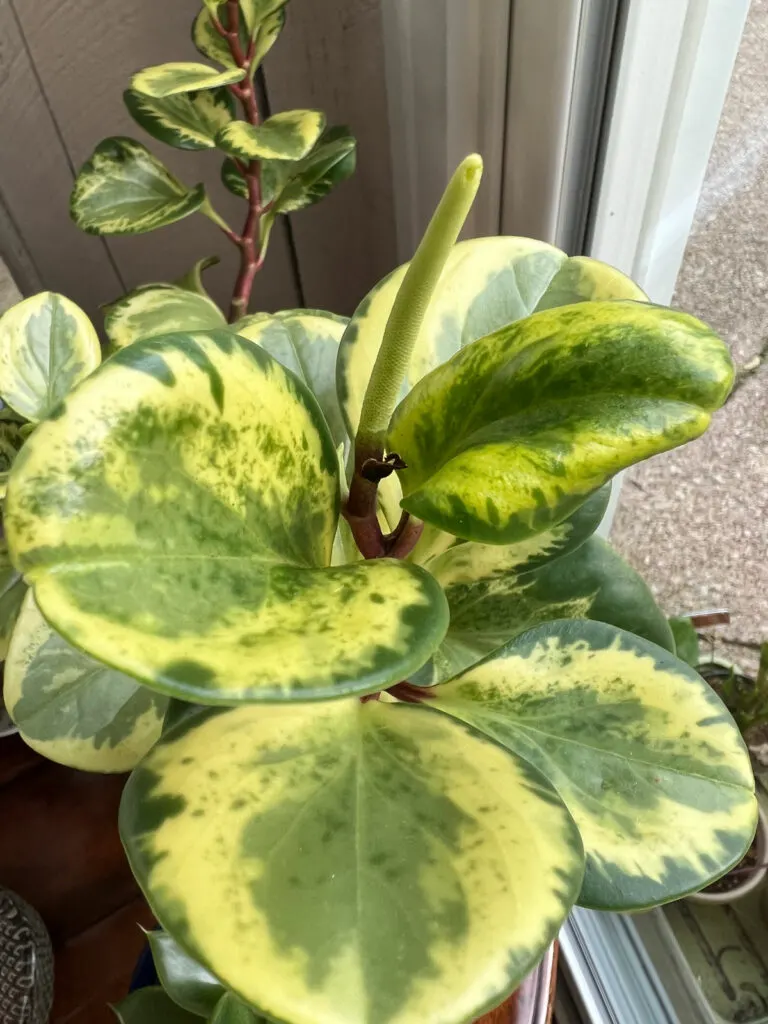
7. PROPAGATION
Propagating this plant is really simple. All you need to do is snip a cutting off just below a node (where the leaf meets the main stem). Make sure that the cutting has at least a couple leaves. You may want to remove the lower leaf on the cutting.
Then you can simply place the cutting in water until it roots, making sure that at least one node is under water. Once it has roots that are 1/2 inch to an inch long, go ahead and pot them up.
You can also skip rooting in water and place the cuttings right into a small pot. To expedite rooting, you can dip each cutting in rooting hormone before inserting into potting mix.
Keep the potting mix pretty moist to encourage rooting. It is also helpful to cover rooting cuttings with a clear plastic bag in order to maintain a humid environment.
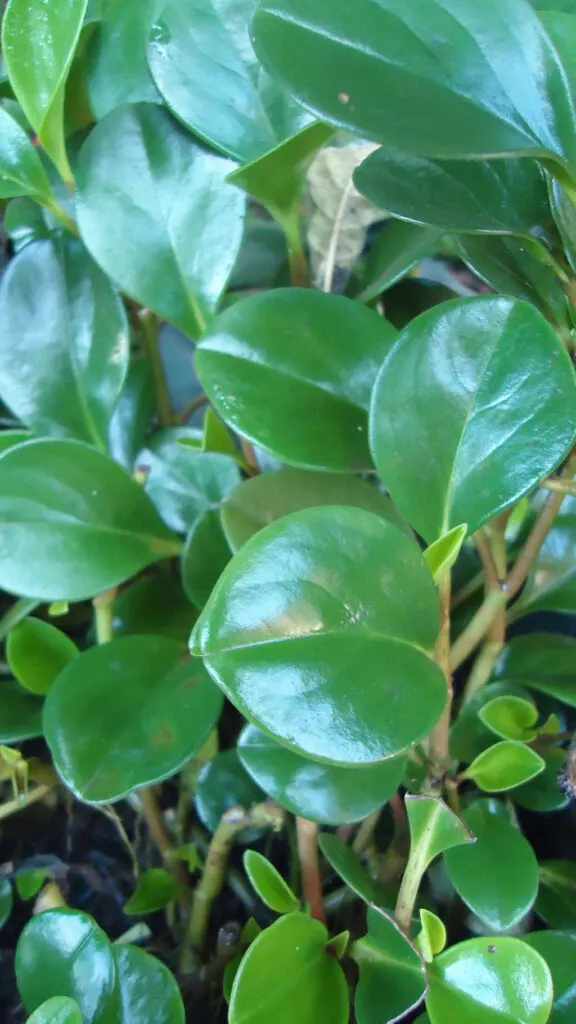
COMMON ISSUES WITH PEPEROMIA OBTUSIFOLIA
What are some common pests that affect Baby Rubber Plant?
These plants are pretty pest free, but they can sometimes be prone to spider mites. Check out my blog post on how to treat spider mites. Occasionally you may even see scale or mealybugs. Treat mealybugs with an insecticidal soap, and check out my blog post for treating scale which can be a trickier pest to eradicate.
Why are there brown edges on my leaves?
In most cases, this is due to your potting mix having stayed dry for too long. Feel your potting mix and if it is completely dry, go ahead and give it a good watering. With more attention to proper soil moisture, the new growth with come in healthy. Any leaves that have already turned brown in any way will not turn green again.
Why are my leaves yellowing?
Yellow leaves can be caused by a variety of reasons. Most often though, they are caused by extremes in soil moisture (either too dry or too wet). Wait until the top 1/4 of the soil is dry before watering again. If it goes completely dry, don’t wait too long to water again otherwise your whole plant will suffer. On the other end, make sure that your plant is never sitting in water and that you let your plant dry out somewhat before watering again.
Why are my Peperomia’s leaves curling and deformed?
Curling leaves are most often caused by keeping your potting mix too dry. Try and aim to water your plant after at least the top quarter of the potting mix is dry, but before it has dried out completely.
Why is my Peperomia falling over?
Over time, as your plant gets taller, your plant may lean and topple over and require some support. Even under good conditions, support can often be necessary. If you have very weak growth however, consider moving your plant to a brighter location to encourage stronger growth. You can also stake it as well.
How do I make my Peperomia bushier?
If you want more compact, bushier growth, go ahead and lightly prune your plant. You can use the cuttings to propagate with, and your plant will grow back more compact.
Do you have a baby rubber plant? Comment below. I’d love to hear! And please help me spread the word and share my image below to Pinterest! And you may be interested in other easy Peperomia varieties to grow. They’re a delight!


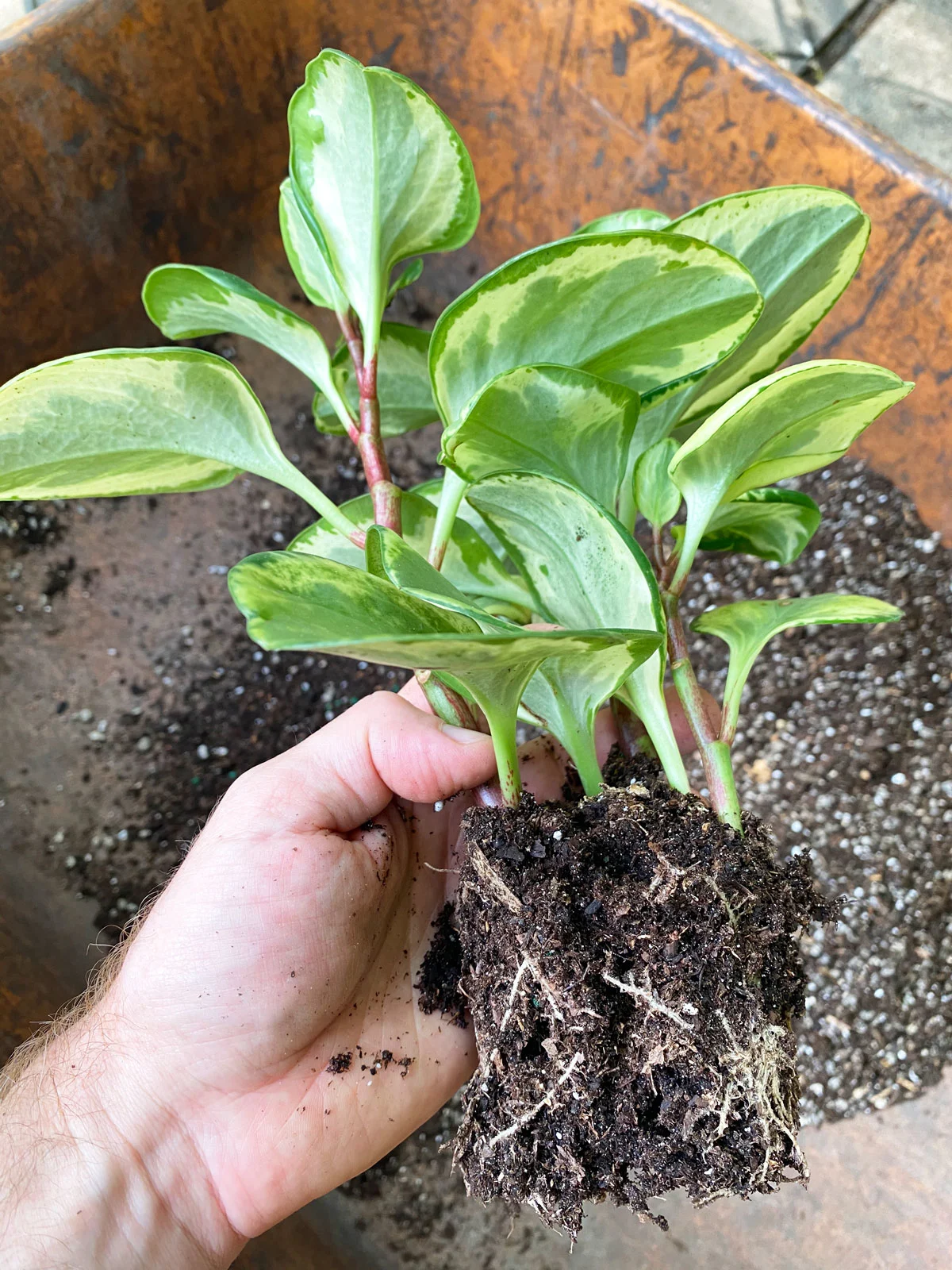
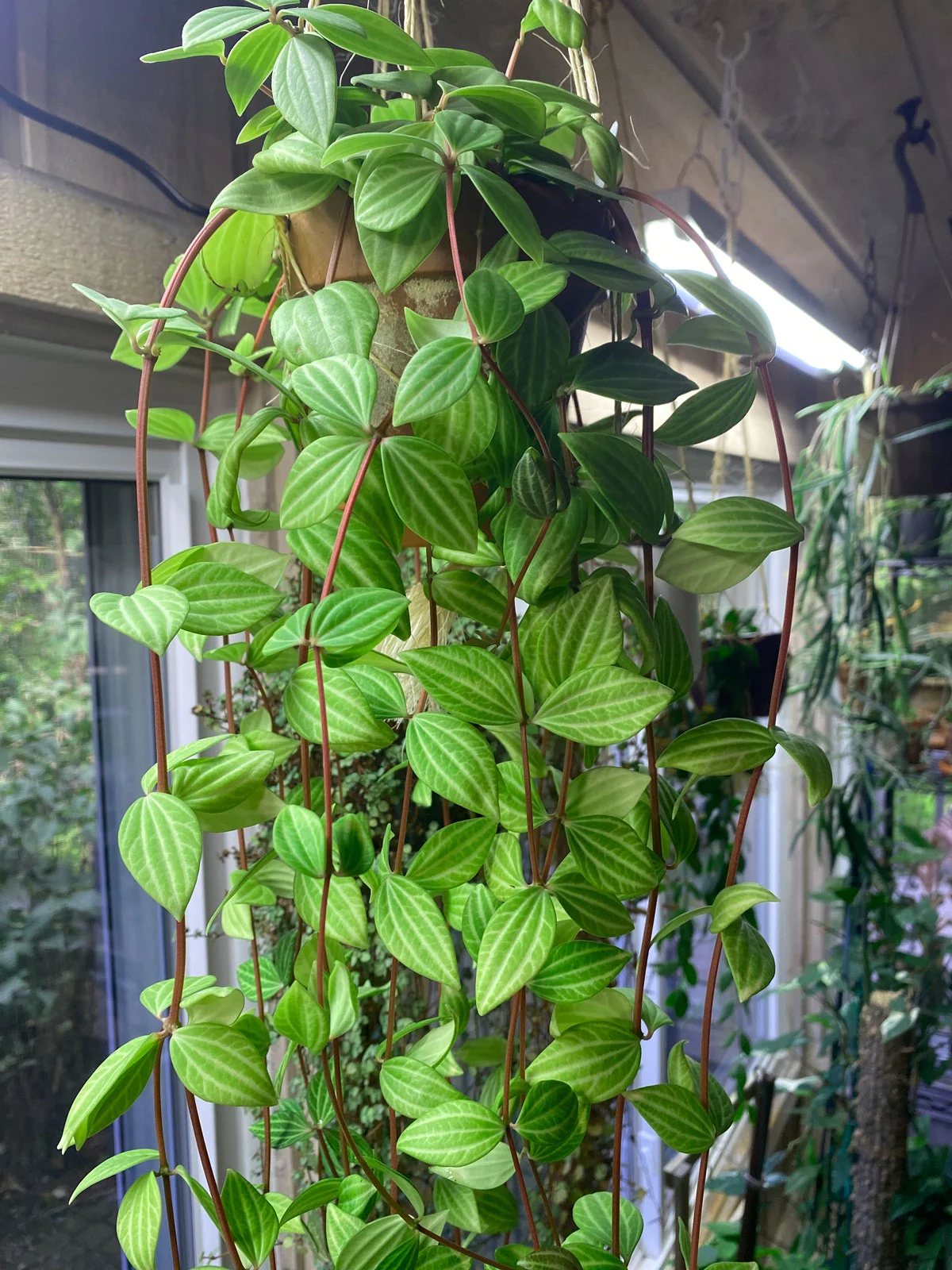
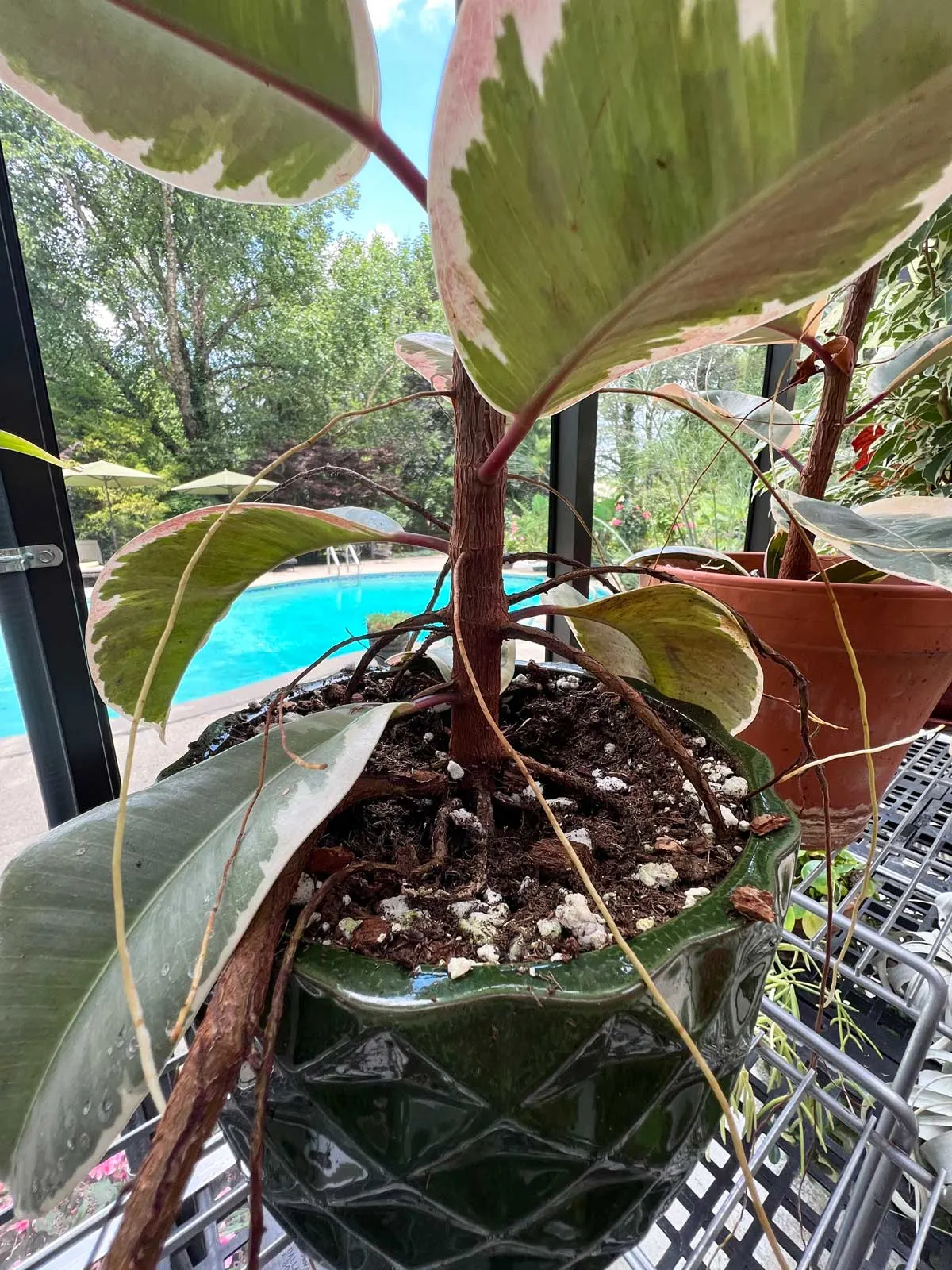
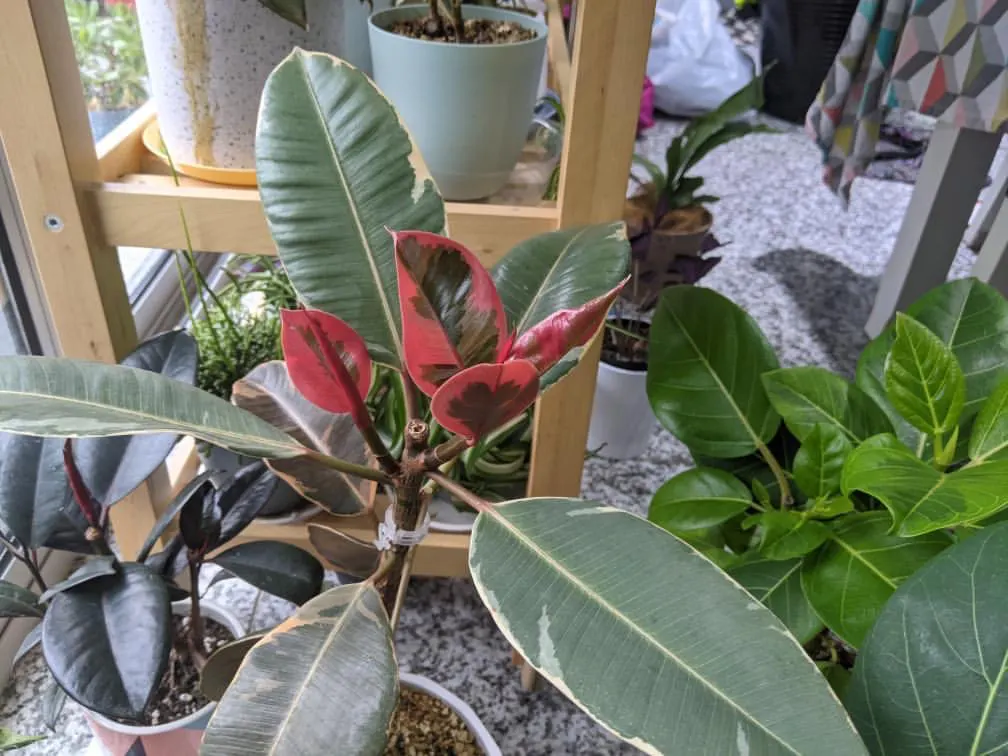
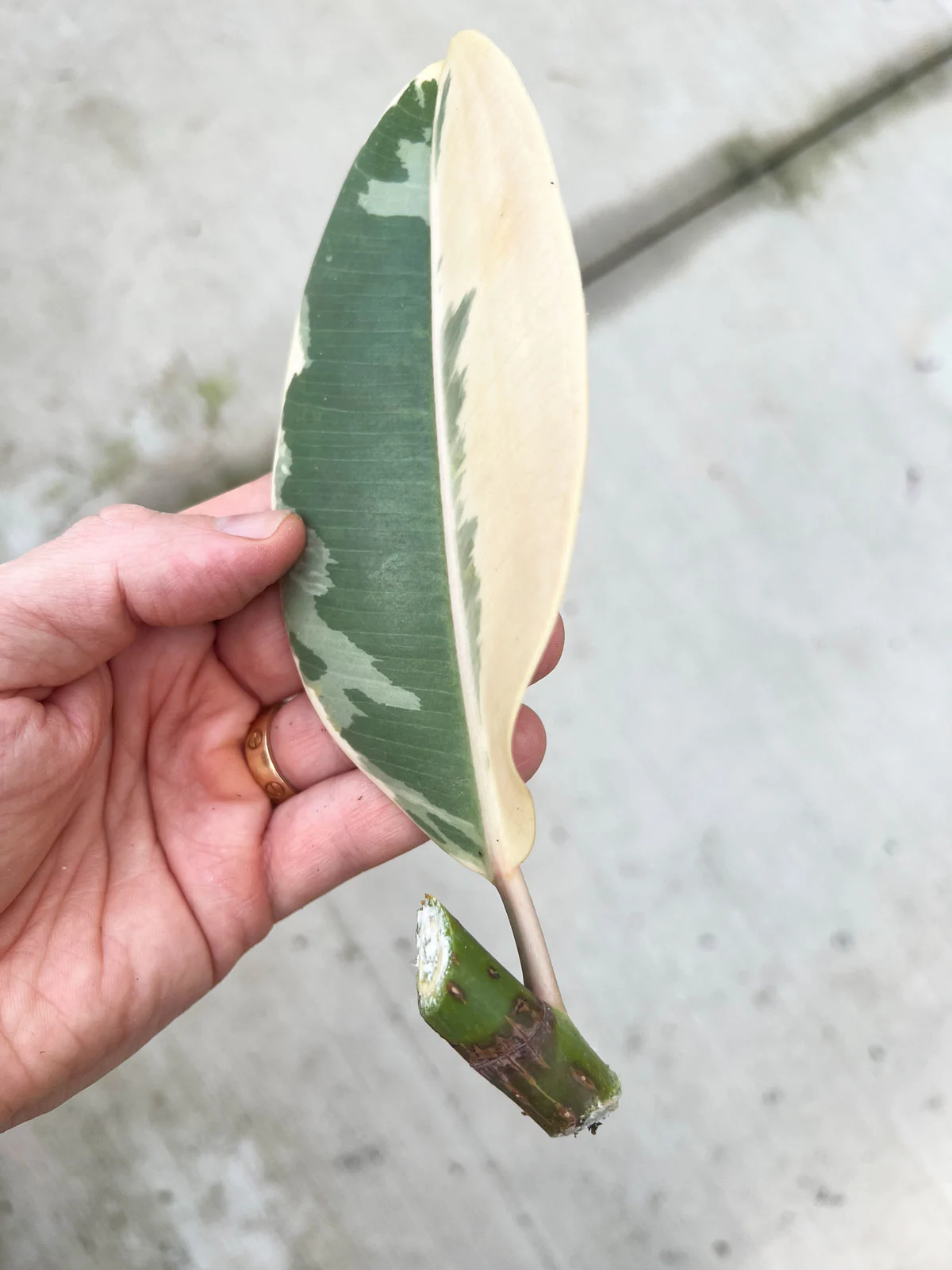
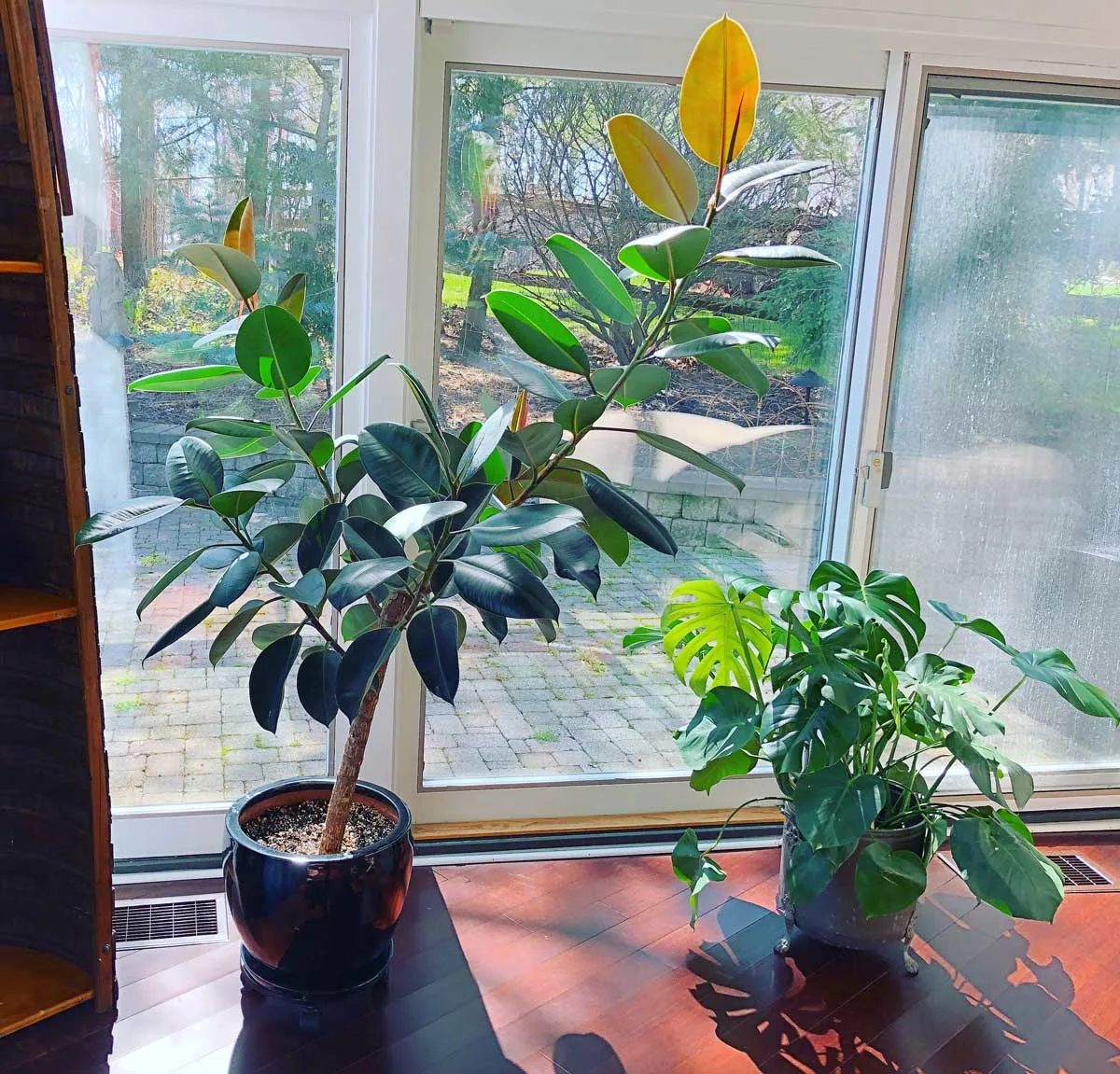
SV
Monday 3rd of June 2024
Thanks for the info. I did not get to see the explanation of what those long stems growing out of it are and what to do with them. Please explain. Is this particularly plant a climber or hanging. My plant confuses me. Sometimes it look flat, others bright and happy. Normal? Thanks
Raffaele Di Lallo
Wednesday 5th of June 2024
It is not a climber. It grows upright. I talk about the "long stems" that you referred to in the article (it's the inflorescence, or flowering structure). I like to cut them off so the plant can focus on growing foliage instead. Hope this helps a bit.
Anne Leblanc
Tuesday 31st of October 2023
Hi, I have a varigated Peperomia Obtusifolia that was small but was doing well, but lately it got what appears to be rust coloured spots on and under the leaves and the leaves keep falling. At the beginning, in the summer, it was growing fast enough that if a leaf fell, more were growing, so I thought it would work itself out but it got quite bad and I love this plant, how to rescue it? How can I attach a picture here? It might be fungus, doesn't appear to be bugs of any kind, probably a disease... I really need to rescue my plant, please! I wrote to a couple other sites but got no answer... Thanks, Anne
Raffaele
Monday 6th of November 2023
Hi Anne! I don't have a feature to add photos in the comments, but if you want to send me an email thorough my contact form on my website. Describe your care, and when I respond, you can attach photos then. I can try and help. I am a little backlogged right now and am trying to catch up, so it may be a little bit before I can respond to the email, but I will get to it!
Vivien
Wednesday 27th of September 2023
Thank you for the info. I wondered what the long stems growing from my little plant were. At first I thought they were leaves but they are too long. I will trim them off as you suggested. I’m not too sure if I am pruning my plant correctly though. Wish I could show a photo
Raffaele
Thursday 28th of September 2023
You can always contact me through my contact form which sends me an email, and you can provide photos when I respond.
Tess
Saturday 22nd of April 2023
My variegated baby rubber plant is beautiful and growing well. One of the branches started to lay over the edge of the pot almost like it was trailing. I've braced it up now, so I think it's okay. It's currently in a 3-in pot. I'd like to repot it with another 3-in pot that has three plants in it. That would mean there would be four individual plants in one pot. Is that okay to do?
Raffaele
Monday 24th of April 2023
Yes of course! That's perfectly fine to do that.
Chan
Tuesday 25th of October 2022
I recently got an Baby Rubber plant and was at a loss. What if it started rotting? What if it dried out? What if… IT DIED? I did not know how to take care of it. Luckily your blog posts were there to help me. Thanks!
Raffaele
Tuesday 25th of October 2022
Glad you enjoyed the blog post!